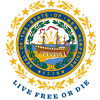Medical Providers
Information and resources for medical providers about childhood and adult lead exposure and prevention
Did you know?
Did you know?
New Hampshire is a ‘Universal’ pediatric blood lead level testing state that requires all children to have a blood lead level test at age 12 months and a second test at age 24 months.
Contact a Public Health Nurse
Contact a Public Health Nurse
Public Health Nurses, working within New Hampshire Division of Public Health Services, Healthy Homes and Lead Poisoning Prevention Program, are available to answer health care provider questions on childhood and adult lead exposure, blood lead level testing, and clinical management of patients with elevated blood lead levels.
Contact a public health lead nurse at LeadRN@dhhs.nh.gov
NH Blood Lead 'Action Level' Triggering Public Health Intervention
Nurse Case Management Services (5 μg/dL)
The Division of Public Health Services provides nurse case management services at no cost to the families of all children with elevated venous blood lead levels at or above the State’s public health action level of 5 micrograms per deciliter (μg/dL). Nurse case management services begin with a nurse home visit to each child’s home and continue until child’s blood lead level has dropped below 5 μg/dL or until child is over 72 months of age. For more information, email LeadRN@dhhs.nh.gov..
Parent Notification (3 μg/dL)
Parents and guardians of children with capillary or venous blood lead levels of 3.0 µg/dL or higher are notified by mail that their child has a blood lead elevation and to inform parents who are tenants to work with the property owner and advise against engaging in renovation, repair, or painting activities themselves. These notification letters inform parents who own and occupy their own house of available resources for identifying and eliminating lead hazards.
CDC’s Blood Lead Reference Value
It is important to know that New Hampshire's 'action level' is set by state law and is different from the blood lead reference value established by the Centers for Disease Control and Prevention (CDC) and lowered in October 2021 to 3.5 µg/dL. CDC’s blood lead reference value of 3.5 µg/dL is a screening tool to identify children who have higher levels of lead in their blood compared with most children. The reference value is not health-based and is not a regulatory standard. States independently determine action thresholds based on state laws, regulations, and resource availability. Learn more about CDC’s Blood Lead Reference Value.
Childhood Lead Poisoning Medical Management ‘Quick Guides’
New Hampshire’s Division of Public Health Services has childhood lead exposure, testing, and medical management clinical reference ‘Quick Guides’ available, at no cost, for pediatric health care providers. These laminated clinical reference ‘Quick Guides’ can be used in exam rooms and point of care lab workstations and are available upon request at LeadRN@dhhs.nh.gov.
- Child Medical Management ‘Quick Guide’ for Lead Testing and Treatment
- Lead Testing ‘Quick Guide’ with LeadCare® II Analyzers
- Lead and Children – What Do Blood Lead Levels Mean for Your Child’s Health
Happy, Healthy, Lead-Free Me! Board Books
Education Sessions for Providers and Clinical Teams
Short educational sessions, either on-site or virtual, are available at no cost to Healthcare Providers. Included in these educational session is information on New Hampshire’s blood lead testing requirements, medical management guidelines, surveillance data and the services provided by the Division of Public Health Service's nurse case management clinical team.
Education sessions can readily be arranged before clinic hours, lunchtime, or during the evening for your practice’s convenience. For more information contact Division of Public Health Services, Healthy Homes and Lead Poisoning Prevention Program at: LeadInfo@dhhs.gov.
Distribution of Lead and Children Fact Sheet to Parents
New Hampshire state law requires that any health care provider conducting capillary blood lead level testing with point-of-care in-office analyzers, provide the Lead and Children factsheet to any parent or guardian of a child whose test indicates any presence of lead. The Lead and Children fact sheet is available as a PDF and in four other languages that can be found on our Publication and Resource page. To receive printed copied of the factsheet at no cost, contact: LeadInfo@dhhs.nh.gov.
Lead and Drinking Water
Drinking water in New Hampshire is typically not the primary source of exposure to lead for children, but drinking lead-contaminated water can increase a child’s overall exposure to lead. Although lead rarely occurs naturally in New Hampshire’s drinking water sources, it can be found in drinking water due to the wearing a way of piping, plumbing fixtures, or the solder that connects those pipes. Lead exposure can cause negative health effects, especially in children who are still growing and developing. It is important to remove your child’s access to all the sources of lead in their environment. Here are talking points when talking to patients.
Adults and Lead
Most adults with lead poisoning do not look or feel sick. Symptoms of lead poisoning include headaches, stomach cramps, constipation, muscle/joint pain, trouble sleeping, fatigue, irritability, and loss of sex drive. Lead exposure can cause high blood pressure and brain, kidney and reproductive health issues in adults. The Adult Medical Management ‘Quick Guide’ is available as a resource for Healthcare Providers that outlines what occupations are at risk for lead exposure and how to manage the follow up testing of adults that test positive for lead. The Lead and Adults fact sheet is available as an educational resource for adult patients that have tested positive for lead.



